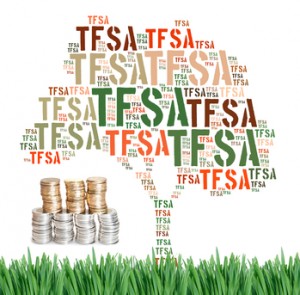 … contributing as much as $5,500 to your TFSA (Tax Free Savings Account) if you’re Canadian. Launched at this time in 2009 and behaving somewhat like America’s “Roth” IRAs, it’s hard to believe this is already the seventh time you can contribute. By my calculations, that means $36,500 of collective contribution room plus any investment growth. That’s four years at $5,000 and now three years at $5,500: the maximum was boosted by $500 as an inflation adjustment for calendar 2013.
… contributing as much as $5,500 to your TFSA (Tax Free Savings Account) if you’re Canadian. Launched at this time in 2009 and behaving somewhat like America’s “Roth” IRAs, it’s hard to believe this is already the seventh time you can contribute. By my calculations, that means $36,500 of collective contribution room plus any investment growth. That’s four years at $5,000 and now three years at $5,500: the maximum was boosted by $500 as an inflation adjustment for calendar 2013.
So if you’re one half of a couple, that means $73,000 in joint contribution room, even if you left it in interest-bearing investments paying almost zero. If you’ve been investing mostly in equities (either stocks or equity ETFs), it’s likely your TFSA had reached $40,000 or more by year-end, so it’s quite conceivable that some couples now have close to $100,000 invested in TFSAs between them.
Thursday, Jan. 1 was of course a holiday. While Friday, Jan. 2, 2015 is likely to be a quiet day for most, there’s no reason why you can’t contribute the next $5,500 to your TFSA that day, particularly if you use online banking and/or discount brokerages.
Good place for equity ETFs
What to invest in? In retrospect, those who invested in US investments with unhedged exposure to the US dollar would have done best up till now. Our daughter’s TFSA is more than half invested in US tech stocks and broader ETFs and the exposure to the greenback has boosted her TFSA to several thousand more than our own TFSAs with more exposure to the loonie.
Generally, I think a Couch Potato approach to investing in TFSAs makes the most sense, using broadly based ETFs from firms like Vanguard or iShares. Those closer to retirement may want a healthy exposure to Canadian dividends: foreign dividends will lose a bit of withheld tax in a TFSA and are better held in RRSPs for that reason. But for younger investors it may make sense to hold non-dividend paying US tech stocks in a TFSA for both the extra growth potential and the exposure to a strong US dollar that is showing no signs of weakening.
I still say the TFSA and Roths are the best games in an over-taxed town. While it’s true that many had hoped the 2015 limit would be more than $5,500, remember that unlike RRSPs, you can continue to contribute to TFSAs well past age 70 or 71: in fact, if you live that long you could still be contributing if you’re a hundred or more.
The key is to get the money in there as soon as you can and let it grow. And that means early January each and every year. While I think the benefit is particularly powerful for the young, they should balance the growth potential with debt repayment. There’s not much point in paying close to 20% a year in credit-card interest if you’re only earning 2% interest in a GIC or cash equivalent contained in a TFSA.


